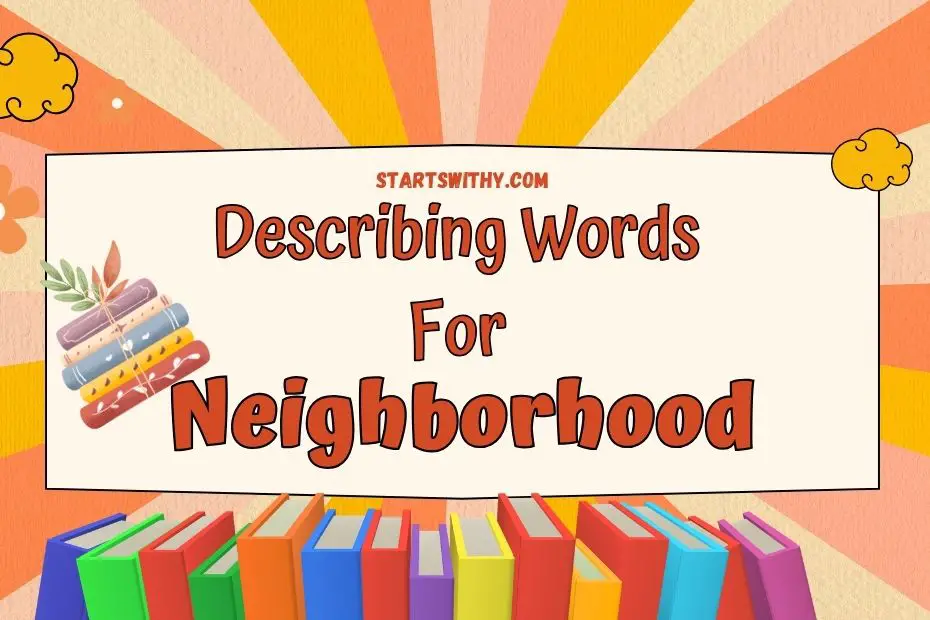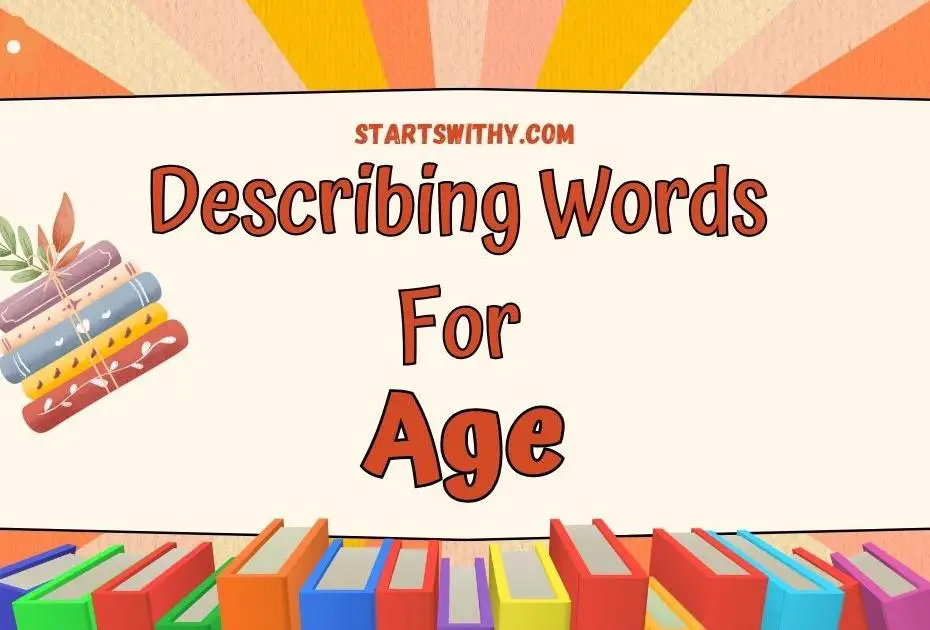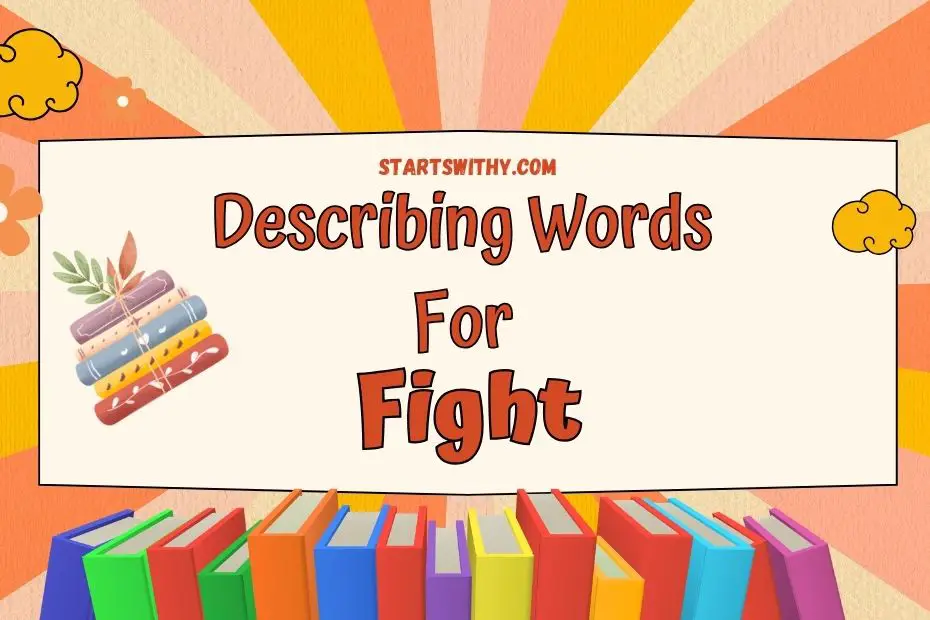Living in a vibrant and welcoming neighborhood can truly enhance our daily lives. From the friendly neighbors to the charming streets, there is something special about finding the perfect place to call home. But how do we accurately describe the characteristics that make a neighborhood unique? In this article, I’ll be sharing a comprehensive list of adjectives that can be used to describe neighborhoods, along with examples that bring these words to life.
When it comes to describing a neighborhood, there are countless words that can capture its essence. From quaint and picturesque to bustling and diverse, each adjective paints a different picture of what it’s like to live in a particular area. Whether you’re searching for the perfect word to describe your own neighborhood or looking for inspiration for a writing project, this article will provide you with a wide range of adjectives and examples to choose from.
By using descriptive words, we can create a vivid image of a neighborhood and help others understand its unique qualities. So, let’s dive in and explore the world of adjectives for neighborhoods, discovering the perfect words to capture the charm, character, and atmosphere of any community.
How to Describe neighborhood? – Different Scenarios
When it comes to describing a neighborhood, there are various scenarios that can arise. Each scenario may require a different approach to accurately capture the unique qualities of a neighborhood. Let’s explore some of these scenarios and how to effectively describe neighborhoods in each one:
1. Describing a Residential Neighborhood
In this scenario, we want to portray a neighborhood where people live and engage in everyday activities. To describe a residential neighborhood, consider using adjectives such as:
- Safe – A neighborhood where residents feel secure and protected.
- Quiet – A peaceful area with minimal noise and disturbances.
- Family-friendly – A neighborhood that is suitable and welcoming for families with children.
- Lively – An area with a vibrant atmosphere and active community involvement.
For example, “The quiet streets of Meadow Grove make it an ideal residential neighborhood for families seeking a safe and peaceful environment.”
2. Describing an Urban Neighborhood
Urban neighborhoods are often characterized by their bustling streets and multitude of amenities. To describe an urban neighborhood, consider using adjectives such as:
- Energetic – A neighborhood full of energy and excitement.
- Diverse – A place where people from different backgrounds come together.
- Convenient – An area with easy access to shops, restaurants, and public transportation.
- Trendy – A neighborhood known for its fashion-forward culture and up-and-coming businesses.
For example, “The trendy urban neighborhood of Bricktown offers a diverse and energetic atmosphere, with convenient access to a plethora of shops and restaurants.”
3. Describing a Historic Neighborhood
When describing a historic neighborhood, it’s important to highlight its rich heritage and unique architectural features. Adjectives that can be used to describe a historic neighborhood include:
- Charming – A neighborhood with a delightful and captivating appeal.
- Timeless – An area that has preserved its historical significance throughout the years.
- Picturesque – A neighborhood with stunning scenic views and picturesque streets.
- Quaint – A small, cozy neighborhood that exudes old-world charm.
For example, “The charming and picturesque historic neighborhood of Old Town is filled with quaint homes and timeless architecture, transporting visitors back in time.”
Describing Words for neighborhood in English
When it comes to describing neighborhoods, it’s important to choose the right adjectives that accurately capture their unique characteristics. By using descriptive words, we can create a vivid image of a neighborhood in the minds of others. Let’s explore some adjectives that can be used to describe different types of neighborhoods.
Residential Neighborhoods
Residential neighborhoods are typically quiet, peaceful, and family-friendly. Here are some adjectives that can be used to describe them:
- Cozy: Residential neighborhoods often have a cozy and welcoming atmosphere.
- Safe: Safety is a top priority in residential areas, making them ideal for families with children.
- Serene: These neighborhoods offer a serene and tranquil setting away from the hustle and bustle of city life.
- Neat: Residential neighborhoods are known for their well-maintained and tidy appearance.
- Friendly: In these areas, neighbors often know and look out for one another, fostering a strong sense of community.
Urban Neighborhoods
Urban neighborhoods are vibrant, bustling, and full of life. Here are some adjectives that can be used to describe them:
- Dynamic: Urban neighborhoods are filled with energy and constantly evolving.
- Diverse: These areas are often home to people from different cultures and backgrounds, creating a rich tapestry of diversity.
- Trendy: Urban neighborhoods are usually at the forefront of fashion, arts, and culture trends.
- Convenient: With shops, restaurants, and entertainment options at every corner, urban neighborhoods offer convenience and accessibility.
- Lively: The streets of urban neighborhoods are vibrant and alive, bustling with activity and excitement.
Historic Neighborhoods
Historic neighborhoods have a unique charm, preserving the rich history of a place. Here are some adjectives that can be used to describe them:
- Quaint: Historic neighborhoods often have a quaint and charming atmosphere, with picturesque streets and buildings.
- Architectural: These neighborhoods showcase stunning architecture from different eras, telling stories of the past.
- Nostalgic: Walking through a historic neighborhood can evoke a sense of nostalgia, transporting you to a bygone era.
- Cultural: Historic neighborhoods are deeply rooted in culture and heritage, offering a glimpse into the past.
- Authentic: These neighborhoods maintain an authentic character and ambiance, preserving the essence of their history.
Adjectives for neighborhood
Positive Adjectives for Neighborhood
When describing a neighborhood, it’s important to capture its positive qualities, creating a vivid image for others. Here are some positive adjectives you can use to describe a neighborhood, along with example sentences:
| Adjective | Example Sentence |
|---|---|
| Vibrant | The neighborhood is vibrant with colorful shops and bustling cafes. |
| Charming | It’s such a charming neighborhood with tree-lined streets and quaint houses. |
| Safe | This neighborhood is known for being safe, making it perfect for families. |
| Friendly | The community here is incredibly friendly – neighbors always lend a helping hand. |
| Picturesque | The neighborhood is nestled in a picturesque setting, surrounded by scenic nature. |
| Walkable | I love living in a walkable neighborhood where everything is within reach. |
| Inviting | The neighborhood has an inviting atmosphere that makes you feel right at home. |
| Lively | This neighborhood is always lively, with events and activities happening all the time. |
| Cosmopolitan | It’s a cosmopolitan neighborhood with a diverse range of restaurants and cultures. |
| Green | The neighborhood is known for its green spaces and beautiful parks. |
| Peaceful | One thing I love about this neighborhood is how peaceful and quiet it is. |
| Close-knit | The residents here are part of a close-knit community, always looking out for one another. |
Negative Adjectives for Neighborhood
While it’s important to highlight the positive attributes of a neighborhood, it’s also essential to acknowledge any negative aspects. Here are some negative adjectives you can use to describe a neighborhood, along with example sentences:
| Adjective | Example Sentence |
|---|---|
| Run-down | Unfortunately, this neighborhood has become run-down over the years. |
| Dangerous | It’s not recommended to walk alone in this neighborhood at night – it can be dangerous. |
| Noisy | The neighborhood is constantly noisy, making it difficult to find peace and quiet. |
| Dilapidated | Many of the houses in this neighborhood are in a dilapidated condition. |
| Unfriendly | Sadly, the residents in this neighborhood are known for being unfriendly and unwelcoming. |
Remember, when describing a neighborhood, it’s important to provide a balanced perspective. Highlight the positive aspects, but also acknowledge any potential negatives to give a comprehensive view.
Synonyms and Antonyms with Example Sentences
Synonyms for Neighborhood
When describing a neighborhood, it’s important to have a variety of adjectives to paint a vivid picture. Here are some synonyms that can be used to describe a neighborhood:
- Safe: The neighborhood is secure and free from harm.
- Friendly: Residents are kind and welcoming.
- Vibrant: The neighborhood is full of energy and activity.
- Picturesque: The surroundings are visually appealing and beautiful.
- Quaint: The neighborhood has a charm and old-fashioned allure.
These synonyms can help you create a more detailed and engaging description of a neighborhood. For example:
- The picturesque neighborhood is filled with colorful houses and blooming gardens.
Antonyms for Neighborhood
While it’s important to showcase the positive aspects, it’s also crucial to acknowledge any negative qualities a neighborhood may have. Here are some antonyms that can be used to describe a neighborhood:
- Dangerous: The neighborhood poses risks or threats.
- Unfriendly: Residents are distant or unfriendly.
- Dull: The neighborhood lacks excitement or interest.
- Neglected: The surroundings are not well-maintained or cared for.
- Unappealing: The neighborhood is not visually attractive.
These antonyms provide a balanced perspective and help readers understand the potential drawbacks of a neighborhood. For example:
- Unfortunately, the otherwise charming neighborhood can be a bit dangerous after dark.
Using a combination of synonyms and antonyms can create a well-rounded description of a neighborhood, allowing others to have a clear and accurate understanding. Remember to provide examples and include both positive and negative aspects for a balanced perspective.
Conclusion
Describing a neighborhood requires a careful selection of adjectives that capture its unique qualities. By using a variety of synonyms and antonyms, we can paint a vivid picture that engages the reader. It’s important to remember that every neighborhood has its positives and negatives, and acknowledging both is crucial for an accurate description.
In this article, we have explored a wide range of adjectives that can be used to describe a neighborhood. From peaceful and picturesque to bustling and vibrant, these words allow us to convey the essence of a community. By incorporating example sentences, we have demonstrated how these adjectives can be used in context.
It’s worth noting that when describing a neighborhood, it’s essential to provide a balanced perspective. While highlighting the positive aspects, we should also acknowledge any negative qualities. This ensures that our description is fair and comprehensive.
By utilizing the adjectives and examples provided in this article, you can create a compelling description of any neighborhood. So go ahead and put your newfound knowledge to use, and captivate your readers with an engaging portrayal of the places you know and love.



